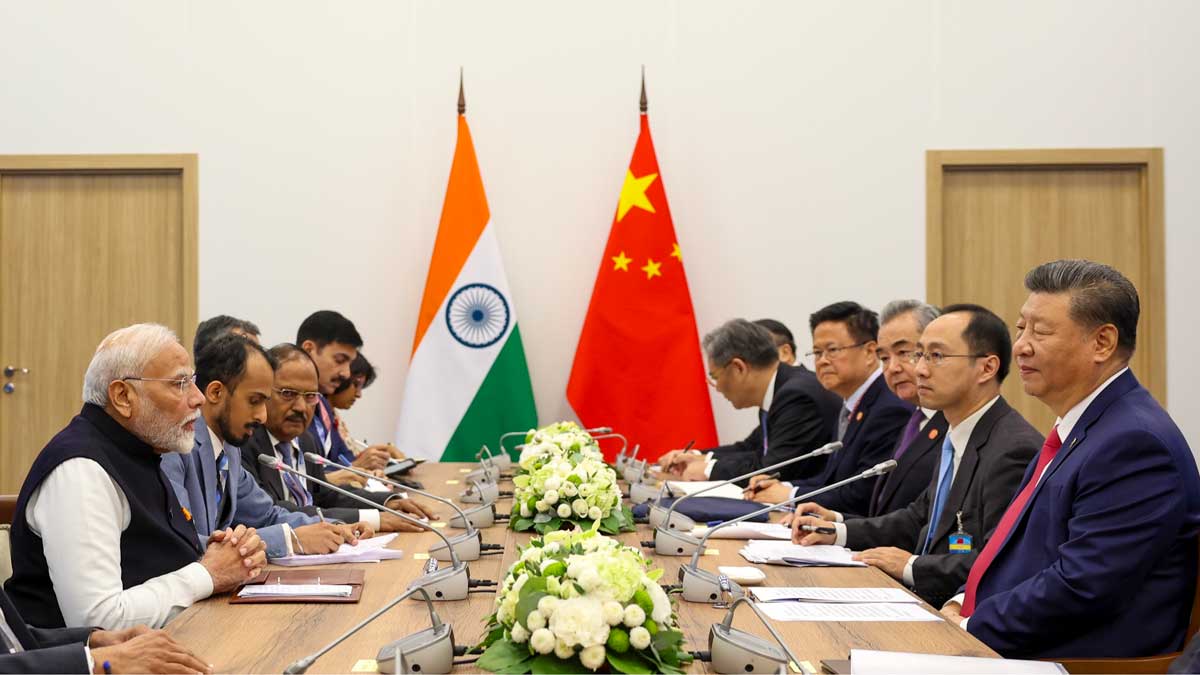In the 16th BRICS Summit at Kazan, Russia, on Wednesday, it may have been a meeting on the sidelines but was easily the most looked out for event because the leaders of the world’s two most populous countries were meeting with their relationship not exactly in the realm of fondness tensed as it was with acrimony on the borders.
India and China together account for more than 34 per cent of the world’s population.
“...We are meeting formally after five years. We believe that the importance of India-China relations is not just for our people. Our relations are also important for global peace, stability and progress,” Modi said.
Prime Minister @narendramodi met with Mr. Xi Jinping, President of the People’s Republic of China, on the sidelines of the 16th BRICS Summit at Kazan, Russia today
— PIB India (@PIB_India) October 23, 2024
Read here: https://t.co/O9095WbqWO#BRICSSummit pic.twitter.com/It6THfBFXt
An external affairs release said both Prime Minister Narendra Modi and Chinese President Xi Jinping “welcomed the recent agreement for complete disengagement and resolution of issues that arose in 2020 in the India-China border areas” and agreed that “Special Representatives on the India-China boundary question will meet at an early date to oversee the management of peace and tranquility in border areas and to explore a fair, reasonable and mutually acceptable solution to the boundary question.”
The wording of the release was interesting too. “The two leaders affirmed that stable, predictable, and amicable bilateral relations between India and China, as two neighbors and the two largest nations on earth, will have a positive impact on regional and global peace and prosperity. It will also contribute to a multi-polar Asia and a multi-polar world.”
“The leaders underlined the need to progress bilateral relations from a strategic and long-term perspective, enhance strategic communication and explore cooperation to address developmental challenges.”
But there is a specific context to the meeting as the very fact that the two leaders met was itself a big development. And then there are certain significant aspects to it.
Firstly, India would definitely need trading partners with whom trade would not be affected by western sanctions. China is the big one there.
Second, India has noticed with apprehension that the diversion of manufacturing by US companies that were based in China has not benefitted India much. The US and Western companies have shifted base and jobs to Vietnam, Taiwan and South Korea who have been the biggest gainers. This is despite India having a cheaper and a more skilled labour force.
Third, India is also an energy dependent country. With the increasing footprint of BRICS in the gas and coal procuring countries, India would benefit a lot from attempt to de-dollarise trading relationships.
The subtext is that India, China, Russia, and Iran—all BRICS members—with an aim to challenge the economic and political monopoly of the West, becomes a very powerful economic corridor both in terms of geography and power politics.
On Monday, India and China had announced that they have finally resolved their differences over the remaining two points of dispute at Depsang and Demchok in eastern Ladakh. The development has taken place more than four years after the brutal clash between Indian and Chinese soldiers that resulted in the deaths of more than 20 soldiers on both sides.



